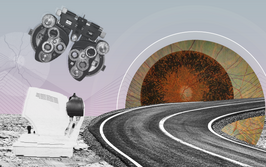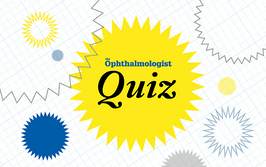The Gift of Sight…
… is one that truly keeps giving. How and where the gift is presented can vary widely, but the impact is always great.
If I were to ask you what you find most rewarding about your occupation (which I do on a regular basis), many of you will answer, “saving and improving sight” – unsurprising, as it is at the very core of what you do on a daily basis. But in a profession that encompasses many different specialties and disciplines – and varies across countries - how each individual ophthalmologist works to present this gift can be very different. And that’s why this issue features two inspiring – but quite different – approaches to saving sight.
In our cover feature, a patient and physician tell their stories. Crystal Ellis was in middle school when, for an unknown reason, she lost vision in one eye. She had a corneal transplant – but her vision did not improve. A positive individual, Crystal shares her experiences and perspectives as a patient. She also tells the heart-warming tale of her relationship with the cornea donor’s family, which really brings home the humanity integral to tissue and organ donation and how ‘precious’ that gift can be.
Around the same time, Crystal crossed paths with Christine Sindt – Professor of Ophthalmology at the University of Iowa hospital – whose innovative, custom-printed prosthetic lens technology went on to give Crystal 20/20 vision. Sindt explores her motivation to create a product to restore sight to those with corneal defects. And Crystal offers the perfect example of impact with her relentless motivation to ‘go for gold’ with her sight restored.
Following on the theme of the gift of sight, in our Profession section Geoff Tabin reveals the backstory to the Himalayan Cataract Project. Many of you will be familiar with the Project and its aims to eradicate global blindness. A truly inspiring individual, Tabin reveals how his interest in humanitarian efforts arose from him witnessing, first-hand, the global inequity in access to care. Almost 30 years after setting up the project, Tabin hasn’t wavered in his goal – and has extended the project well beyond the Himalayas to tackle blindness in many other countries.
The long and the short of it is: whether working for profit or for non-profit, the impact of the gift of sight is universal – and it is clear that everyone working in ophthalmology strives to make a real difference to people’s lives in their own way.

Ruth Steer
Editor













